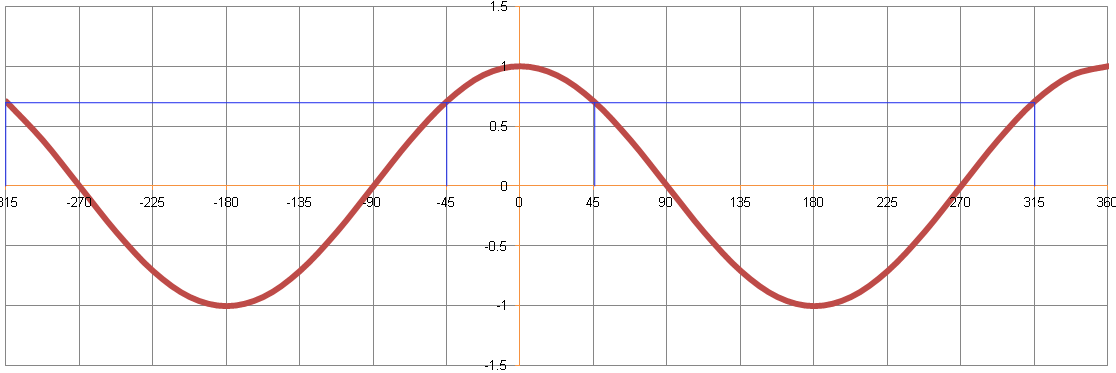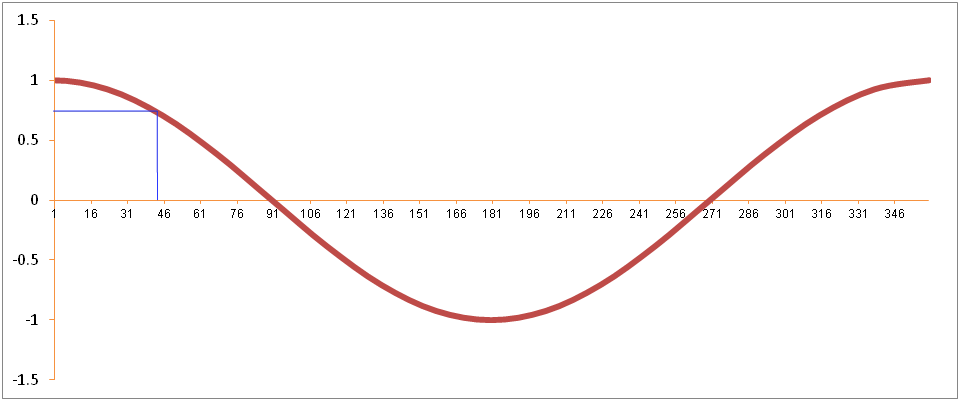Sine and Cosine Graphs
This chapter explores sine and cosine graphs. It covers sketching sine and cosine graphs, finding angles which have same sine or cosine values, and solving simple equations such as sin x = 0.6 You must have prior knowledge of basic trigonometry and sketching graphs attempting this chapter
Unit Circle – Sines
This section explains what exactly is the sine of an angle. First draw a circle of radius 1 as shown below.

Then draw a radius at any angle that you wich as shown below.
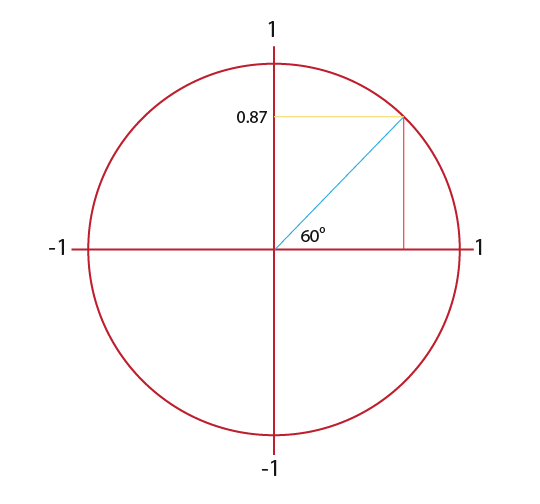
The sine of the angle is simply the height of the end of the line. In the above case we can see that when;
![]()
…then…
![]()
This is also true when you combine the circle idea above with the actual sine graph as shown below.
Above we can see that the angle is 48° or -312° that forms the height of the line to be 0.743.
We say that;

Below are notes to remember…
The value of sinx is positive or negative as shown below.
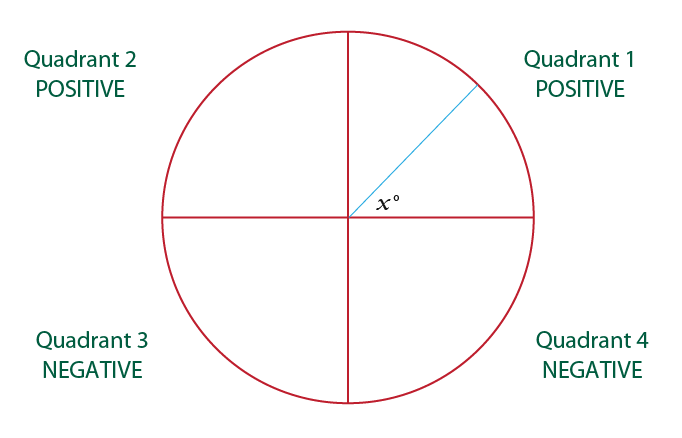
Remember the sine graph repeats every 360°
Cosine
The cosine curve works very similarly to what we have explored above except we look at the width of the curve and not the height. We best see the effect of the curve by rotating the unit circle above as shown below.
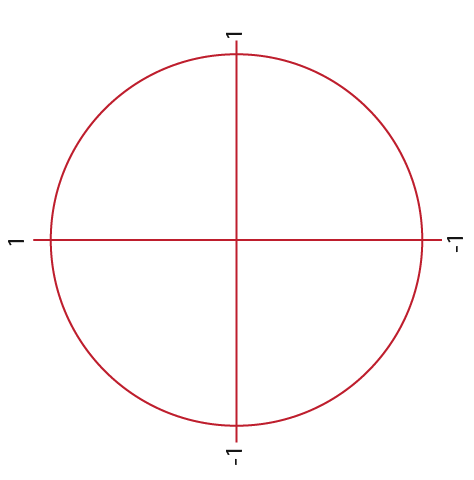
We can compare it with the cosine graph to observe the effect.
Above we can see that the blue line is 61° or 299° while the width of the line is 0.485, We say that;

Below are some notes to remember;
The value of cosx is positive or negative as shown below.

Also remember that the cosine graph repeats every 360°
Angles with the same sine value
You must also acknowledge that different angles may share the same sine value as you may have realised above. For example suppose we wanted to find the angle with the same sine as 50°. Below is the part of the sine curve with the 50° angle indicated.

The sine curve is symmetrical about 90°. We can zoom in closer to get a clear observation as shown below.

Above we have managed to find the sine as being 0.77. Below the blue line has been continued to show the other angle with the same sine.

To find the other angle we simply take away 50° from 180°.

So we can make a conclusion that;

We can generalise by saying;

Remember the graph is also continuos in the negative direction with the same pattern.
Below the negative side of the graph has been shown.
We can find the other 2 angles which have the same sine as 50°. Below the blue line has been continued in the opposite direction.
Notice the gap above which is also 50° as we saw before. The first negative x value/angle is;

The other gap is also 50° as shown below.
The final x value or angle is;

We can conclude that all the following angles/values have the same sine;

Notice above that the angles have been listed in ascending order. You can check then on your calculator to see whether this is true.
Angles with same cos value
Here we shall explore the cosine curve. Suppose we know that cos 45° = 0.707. What other angle gives the same value. The angle and sine have been indicated on the cosine graph below.
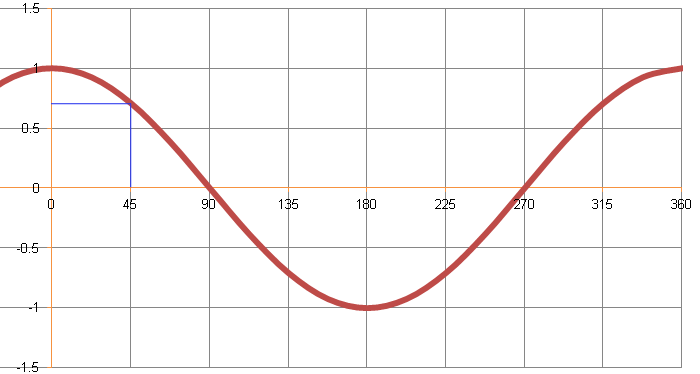
We can continue the blue line to find the other angle. Remember that the graph continues in the same pattern in the negative x values.
All the following angles/values have the same cosine value;
![]()
Note that the angles are written in ascending order.
Solving equations in form sinx = 0.64
Solving simply means write down all of the angles which have a sine 0.64. Suppose we had to solve;
![]()
…in the range -360 ≤ x ≤ 360
Using the graph below we get 40° for sin-1 (0.64). You can use a calculator to get a very accurate value.

If we continue the blue line we can see the next angle or we could simply use the method we discovered above;
![]()
There are also other negative angles as we discorvered earlier.
![]()
The final value of x or angle is;
![]()
We have managed to solve the problem. If sinx = 0.64;
![]()
We can see these angles on the graph below.
Example
Here is another problem that we could solve;
![]()
…in the range -360 ≤ x ≤ 360e
Remember solving simply means write down all the angles which have the sine of -0.57/
We can use the calculator to find the first angle;
![]()
The first angle has been shown on the graph below.
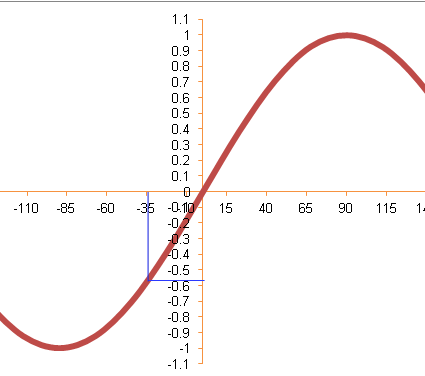
The other negative angle is 34.8° more than -180°, we write;
![]()
Remember there is also two more positive angles or values. The first one is;
![]()
The final one at;
![]()
We have managed to solve the problem. We can now conclude that if sinx = -0.7.
![]()
Above the angles have been rounded to the nearest degree. The angles have been shown on the graph below.
Solving equations such as cos x = 0.7
Now we shall look at cosine. Remember that solving simply means find all angles which have a cosine of 0.7.
We can use the calculator to find the first solution or value.
Or we could use the graph shown below to find that it is the same;
There is also another positive angle besides 45.6° as we already know that;
![]()
Remember that the cosine graph is symmetrical about the y-axis. So the other angles are simply -314° and -56°
We have managed to solve the problem. We now know that if cos x = 0.7 then;
![]()





